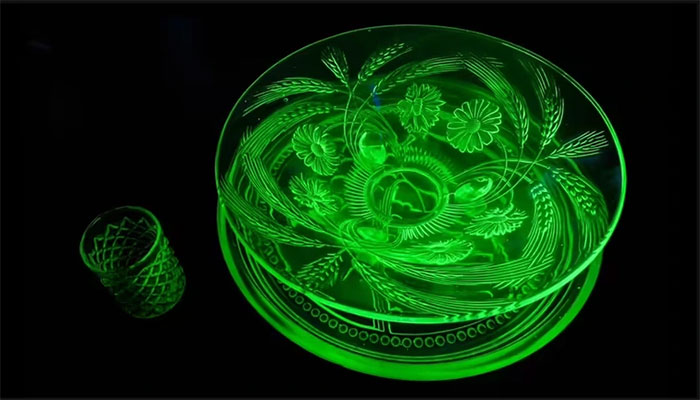The ancient Romans used radioactive substances to make... decorations?
Artisans in ancient Rome created masterpieces of art without knowing its composition including its extremely dangerous radioactive components.
Before the radioactive properties of Uranium and its isotopes were discovered and exploited (for both the good and the bad), this rare metal was used by the ancient Romans in a way no one else could. expected.
According to Paul Frame, a physicist at Oak Ridge University (USA), the Romans put Uranium inside glass, and made it into fine art objects such as bowls, plates, vases for flowers. and then sold them. them for the aristocracy to collect. Some specimens still exist to this day.
"It looks quite attractive because it gives off an iridescent glow under certain conditions, and it's really special," says Frame. However, how this particular material was crafted by Roman artisans is still a mystery.
Just know that throughout history, many collectors have expressed their interest in art that emits light. Of course, they were not aware of its extremely dangerous radioactive composition, but only considered it a special, unique, and highly collectible piece of glass.


The ancient Romans used radioactive uranium as decorative objects with high aesthetics.
Uranium glass - also known as Vaseline glass, is actually radioactive. This is confirmed by researchers and examiners after examining the surviving specimens.
However, the level of danger of radiation from Uranium glass is still controversial among scientists. The majority agree that this radiation certainly does not cause too great effects, nor is it strong enough to kill a person.
Paul Frame even suggests that the level of radiation exposure we experience when flying or breathing indoor air is even higher than when exposed to Uranium glass - or Vaseline. He insists owning these items is "completely harmless" and "risk-free".
However, if a person is exposed to a sufficiently large and strong enough amount of radiation, a person can suffer certain damage to their health.
Specifically, moderate radiation exposure, above 1 Gy, (there are 7 exposure levels from 1 Gy to 7 Gy) can make us sick, with a wide range of symptoms. Several hours after exposure, it usually begins with nausea and vomiting, followed by diarrhea, headache, and fever.
After the first symptoms, there may be a brief period of time when the body seems to be back to normal, with no signs of illness. But a few weeks later came new, more severe symptoms.
If exposed to higher levels of radiation, all of the above symptoms can appear immediately, along with the rapid damage to internal organs, which can lead to death.
A healthy adult exposed to radiation at 4 Gy will usually die within half an hour.
- Funny death of ancient Romans
- Radioactive substances in cigarettes are hidden
- Application of radioactive substances in Medicine and Biology
- The Romans invented the method of recycling 2,000 years ago
- Radioactive leaks in eastern Japan
- The place of preparation of radioactive pharmaceuticals of serious diseases
- How to help Romans have beautiful white teeth without toothpaste
- Radioactive substances from Japan travel around the world
- Radiation reduction with corn cobs
- Half of Fukushima children are radioactive
- Clean 1 ton of radioactive water with 1 gram of new material
- Russia seized radioactive material about to send to Iran
 Biography of hero Vu A Dinh
Biography of hero Vu A Dinh History of hematology
History of hematology Who is Mr. Tam Da 'Phuc-Loc-Tho' and what does it mean?
Who is Mr. Tam Da 'Phuc-Loc-Tho' and what does it mean? Unbelievable facts about the history of the oil and gas industry: Gasoline used to be cheaper than water, so abundant that it had to be dumped into the river...
Unbelievable facts about the history of the oil and gas industry: Gasoline used to be cheaper than water, so abundant that it had to be dumped into the river...